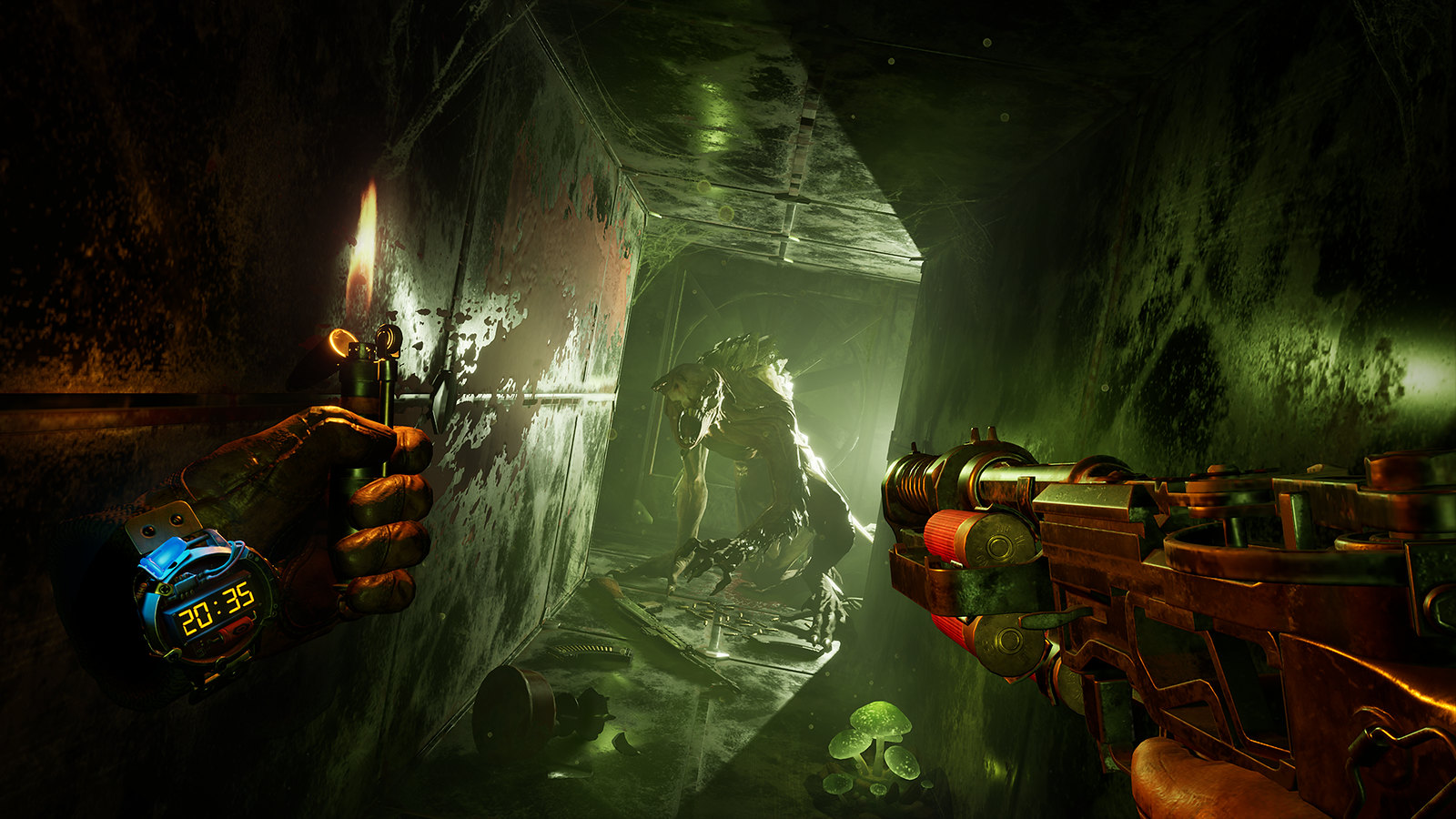The post-apocalyptic survival horror Metro series – based on the best-selling sci-fi novel series of the same name by Dmitry Glukhovsky – plunged players into an oppressively dark and dank underground network and the ruins beyond.
Highly immersive and critically acclaimed, the franchise has spawned three games to date. Before year’s end, that count will reach four. Announced at State of Play this past January, Vertigo Games – creator of Arizona Sunshine and After The Fall – revealed it has spent the last few years working on an all-new game built for PS VR2. Metro Awakening is a standalone story set prior to the events of the original title – Metro 2033. I sat down with Creative Director Martin de Ronde and Game Director Samar Louwe to discuss more about how this world has been adapted to VR and how they’re keeping the title authentic to the series.
The game’s story has been created in collaboration with the original author
“One of the first things that we did when we embarked upon this project was to reach out to Dmitry [Glukhovsky],” explains de Ronde. “For us almost like, we were expecting him to come in and come up with another story for the game that was in line with the other Metro games. But instead, he came up with a very, very personal, emotional story for a new character. […] It also meant that our focus started to shift from taking a straightforward approach to a more story-heavy and story-driven approach in this particular game. And of course, the Metro series has always been known for the story that differentiates from other first-person shooters out there, but this time around, I think Dmitry really wanted to make sure that the story and the development of the characters was even more important.”
It’s still going to stick close to the playstyle of the mainline games…
“Part of our onboarding process for every team member is to play the games, of course,” explains Louwe. “And so we look at what the strengths are of the franchise, and specifically on which of those strengths are translatable to VR. And some of the things that we noticed is the dynamic that they have between stealth and combat. And always making sure that you’re on your toes, and that you are never really sure when people are going to spot you. That’s something that works very, very well in VR. There’s just something about creeping up on enemies, listening to what they’re talking about. Of course the nature of VR, you can physically sit behind cover, maybe you can peer through a hole in the cover, and then you can spy on your enemies.”
“But rest assured for everybody that is a little bit more trigger happy,” interjects de Ronde. “There’s plenty of classic Metro action in the game.”
“I think it’s also good to say that the mainline games, of course, have Artyom,” Louwe continues. “After the first game he becomes a Spartan. But in [Metro Awakening], our protagonist is not necessarily a combat expert. So with that in mind, it also fits better to have a bit of a slower pace to the combat versus narrative than the original Metro series.”
…and keep close to their look and feel, thanks to original developer 4A Games
“We were very happy that 4A helped us fantastically well with supplying all the assets that they have from those games,” explains de Ronde. “We were able to either use some of those assets directly or use them as a reference for most of the stuff that we built in the game… it’s helped ensure that the game looks the way it looks.
“There are assets that we looked at, and we wanted to use them specifically because they play a role on the mainland series, we wanted to reuse them again. In our game, you want to also make sure that fans recognise those elements. And then there was obviously stuff that serves the purposes as reference. And then there’s stuff that we’re almost regressing in terms of what would have looked like, X number of years before the events in the mainline series.”

You’re still going to feel the pressure of your bullet count
“You’re basically constantly looking for ammo,” chuckles Louwe when asked if, like the previous games, sourcing bullets is going to be an ongoing concern. “We have this beautiful environment, we have this beautiful world, our art is made sure that there’s detail to explore. But you also need a reason to explore. And the main reason to explore every nook and cranny is to just find bullets. We figured it would be best to hide those in small packets. So you won’t necessarily find full clips all the time. Instead, you will be finding single bullets out here, a couple of bullets there. And we’ve also made an effort to make sure that in some cases that there’s a bit of environmental storytelling around how that ammo got there, and something that triggers your imagination.
“The philosophy that we’ve taken along for this is also that basically, if you look everywhere, you’re probably going to have enough bullets to get through your combat encounters. If you just look on the critical path, you will probably have to be a better shot. And if you don’t scavenge at all, then you’re gonna have a hard time. Of course, you can always fall back to stealth. If you’re successful at that, then that’s always an option.”
Translating the tactile nature of Metro to PS VR2
Wiping your gas mask clean, pulling out maps, peering at ammo counts on guns rather than UI helped immerse you in Metro. I ask whether that makes for an easy VR adaptation. Vertigo’s research proves it can’t be a like for like.
“It’s an interesting point you bring up about wiping clean your gas mask… because Metro is such a tactile world it was obviously for us something that we definitely wanted to try and incorporate in the game. We tried to come up with an alternative way of wiping clean your gas mask that I think fans will very much still appreciate, even though it’s a slightly different version and wiping it when you have it on your face.”

“We chose to keep a lot of our UI and interactions as diegetic as possible,” continues Louwe. “For example, if you want to see how many bullets you have left in your gun, we could have put a counter on it. But we didn’t do that. Instead we opened up the clip, so that you can actually see how many bullets are in there. So if you want to know how many bullets are in your clip, you have to pull it out. It’s just a bit more immersive when you go into a combat encounter and you’re like “okay, let’s prepare, I’ll pull out my clip, check. That’s going to be enough for this one” then you snap it back in. If you want to put on your gas mask, we put it on a backpack. So you pull out your backpack by grabbing it from your shoulder. The gas mask is hanging from it. You just grab it from there and put it to your face, and then you stick it on. Those are the types of interactions that we were very keen on just making them as diegetic as possible.
“The adaptive triggers are a great example of how you can boost the immersion even further, because they give you just a tiny little bit of extra feedback as you fire your weapon. And our weapon designers actually had a lot of fun implementing it, and tweaking it for each weapon. It seems like a really small thing but it is kind of like those subtle elements that make you forget that you’re playing a game when it’s just there, right? Another example is the haptic feedback. It gives you that little bit of added experience to make the intense things that will happen to you in this game, to make them that bit more visceral.”
The game’s Comfort settings
“We want to focus on immersion,” states Louwe. “So our default locomotion setting, we’re offering two presets, so we have Comfort and we have Immersion. In Immersion, the default locomotion setting is continuous stick movements with snap rotation. Of course, we also offer settings you can just change in the Settings menu to make something even more immersive, such as continuous rotation. If you want to have a bit of a more comfortable experience, then you can set your locomotion settings to teleportation. That said, we are not really shying away from pushing the boundaries of VR when it comes to creating a visceral experience. So in Immersion mode, you can also expect to be moved around a bed or knocked over to wake up unconscious on the floor or, or even be thrown off a rail car for example.”

This version of the interview was condensed for brevity. You can listen to a fuller version of the interview on the PlayStation Podcast, dropping this Friday. Metro Awakening will launch later this year on PS VR2.
Go to Source
Author: Gillen McAllister (he/him)


